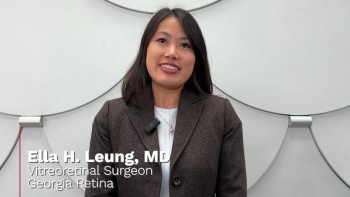
Know the guidelines for coding glaucoma tests
Both Medicare and private payers are known to deny coverage for glaucoma screening tests. Knowing which patients qualify for tests based on medical necessity is important. Also, knowing the rules will prevent abuse, while allowing you to confidently report the services you provide.
Key Points
Medicare does not cover screening studies. Private payers also typically deny screening studies. Therefore, it is important to understand which patients qualify for tests based on medical necessity.
Many of the services discussed here will be appropriate for patients with documented glaucoma as well as for those with suspected glaucoma. The definition of a suspected glaucoma will vary from payer to payer, but most definitions will resemble the guidelines in the American Academy of Ophthalmology's preferred practice pattern (PPP). The PPP defines a patient with suspected glaucoma as an individual with a suspicious-appearing optic disc or nerve fiber layer and/or a suspicious visual field, or a person with consistently elevated IOP w ith a normal disc and field. Additionally, a "constellation of risk factors" (the risk factors include a family history of glaucoma and Latino or African descent) will qualify a patient as having suspected glaucoma.
No national coverage determinations are issued by Medicare regarding commonly used glaucoma tests. Many Medicare carriers, however, have created "local coverage determinations" regarding those services. Non-federal payers also have published coverage guidelines or clinical policy bulletins that cover various glaucoma tests. Familiarity with the standards is crucial to the appropriate utilization and billing of those studies.
Corneal pachymetry
A frequently used test in patients with glaucoma and suspected glaucoma is corneal pachymetry. This test is coded as CPT 76514.
This is a good example of a test that would not be covered as a screening test. It is easy to imagine how virtually all patients that present to a practice could undergo this relatively innocuous test as a "screen for glaucoma." When no clinical indication exists for this service, such a protocol likely would expose a practice to charges of abuse.
Corneal pachymetry generally is considered a "once-in-a-lifetime service" in the population with glaucoma or suspected glaucoma.
Some carriers expand the coverage through a local coverage determination, however. The Medicare carrier Wisconsin Physician Service indicates that repeat pachymetry can qualify for payment when the patient is seen by a new physician billing group, or if the patient has had refractive surgery or a corneal transplant subsequent to the initial pachymetry.
Corneal pachymetry inherently is bilateral and, therefore, only is billed once, although both eyes typically are tested together. An evaluation of the impact of the measurement should be documented.
After describing the actual thickness, evaluation might include categorization of the cornea as thin, normal, or thick. Additional comment should be made as to the appropriate correction factor given the corneal thickness. Mention of how the thickness will affect clinical care will support the billing for the service.
Payers recognize visual field testing as necessary to the appropriate care of patients with glaucoma. Coverage for visual field testing in suspected glaucoma generally is not difficult to obtain. CPT 92083 is the correct code for the standard full threshold automated perimetry test in the patient with glaucoma or suspected glaucoma.
Many payers have established local coverage determinations (Medicare) or coverage guidelines (private payers) for visual fields. Those outline coverage criteria include payable diagnoses. In many cases, frequency edits will be part of the guideline.
Scenarios will exist in which you believe visual fields should be obtained more frequently than what might be expected. In those situations, document why you believe frequent visual field tests are required. It is advisable to have an Advance Beneficiary Notice of Noncoverage or comparable commercial insurance waiver signed so that you may collect from the patient should his or her insurance deny the service.
Newsletter
Don’t miss out—get Ophthalmology Times updates on the latest clinical advancements and expert interviews, straight to your inbox.














































.png)


